 0555-6768298
0555-6768298
 0555-6768298
0555-6768298
Se você tiver dúvidas ou sugestões, deixe-nos uma mensagem, responderemos o mais breve possível!
Contate-Nos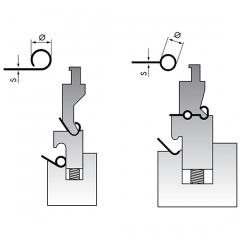
Vantagens Produção em dois ou três tempos Redução de marcas através de dispositivo de retenção com mola Componentes ativos são reforçados Alta repetibilidade através de backgauge integrado Teste funcional e ajuste através de dobras de teste - com suas folhas de amostra Adequado para Espessura do material até 4,0 mm mínimo dentro de Ø: 2,5 mm x espessura do material para aço e alumínio 3,0 mm x espessura do material para aço inoxidável
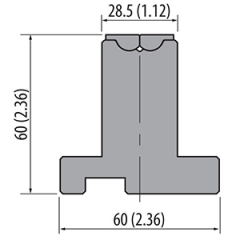
Pressione o freio rolla-v sem arranhões, é melhor colocar o filme na superfície da peça quando você dobrar. e recomendaremos o tamanho da matriz roll-v adequado para você de acordo com a placa que você dobra.

Matrizes ajustáveis estilo calço As matrizes inferiores ajustáveis podem ser consideradas uma das adições mais versáteis a uma prensa dobradeira. Com este tipo de ferramenta, as aberturas podem ser dispostas de 6,35mm a 381mm. Os espaçadores são fornecidos para produzir a abertura necessária. Os espaçadores com fenda permitem uma fácil remoção para alterar a abertura da matriz. Quando não estão em uso, os espaçadores são posicionados nas laterais do bloco da matriz. Essas matrizes podem ser fornecidas em comprimentos sólidos ou seccionadas para facilitar o manuseio.
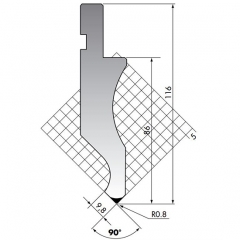
O tamanho da lâmina reta: 835*146*26mm, 90 graus. o material é 42CrMo4, a dureza é HRC47+/-3
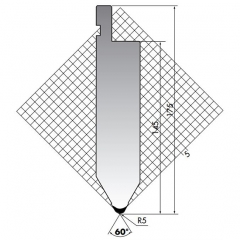
O tamanho da lâmina reta: 835*175*40mm,60 graus. o material é 42CrMo4, a dureza é HRC47+/-3

O tamanho da lâmina reta: 835*146*26mm, 90 graus. o material é 42CrMo4, a dureza é HRC47+/-3

O tamanho da lâmina reta: 835*145*32mm,60 graus. o material é 42CrMo4, a dureza é HRC47+/-3
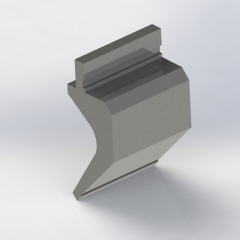
O tamanho do soco gooseneck: 835*197*92mm,88 graus. o material é 42CrMo4, a dureza é HRC47+/-3. e altura 197mm, largura 92mm. pode ser feito de acordo com o pedido do cliente.
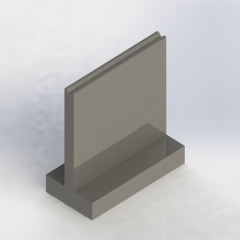
O tamanho da matriz da TV: 835*120*60mm, V12,30 graus. o material é 42CrMo4, a dureza é HRC52-58. e V6,V8,V10,V16,V20,V25 podem ser feitos de acordo com a solicitação do cliente.
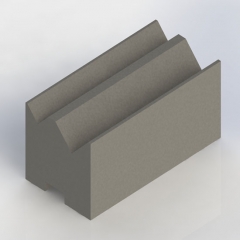
As matrizes 2V autocentrantes, o tamanho é 835*46*50mm,88 graus, o peso é 17kg. e podemos fazer V5-V9,V8-V12,V12-V20,V16-V25 e outras aberturas em V de acordo com a espessura da dobra.
What is the best material for press brake tooling?
In the field of sheet metal fabrication, the material selection of press brake tools directly determines its wear resistance, service life, and forming accuracy. To ensure production efficiency and product quality, it is especially important to choose tooling materials scientifically. However, with so many material options available on the market, customers are often confused when making a decision. So, how can one choose the "best" tooling material? This article will explore the topic from four key perspectives.
Based on Sheet Material Type
Different sheet materials require different tooling materials. The most commonly used press brake Moulds materials on the market include 42CrMo, T8/T10, H13, and SKD11/D2. Among them, high-strength and tough alloy steels like 42CrMo are sufficient for most general bending tasks. However, for materials such as stainless steel, which have higher strength and springback, harder and more wear-resistant tooling materials like SKD11 or H13 are more suitable.
Based on production volume and usage frequency
For long-running production lines or high-frequency operations, it's wise to use more wear-resistant materials like H13 or SKD11. While these come at a higher upfront cost, they significantly reduce downtime and tooling replacement. For short runs or occasional use, 42CrMo offers a great balance of performance and affordability.
Based on precision requirements
High-precision sheet metal parts often require higher hardness and stability from the tooling. In such cases, it is recommended to use high-hardness materials like SKD11 to prevent deformation and maintain consistent bending angles over time. Tooling with lower hardness is more likely to wear out or deform with prolonged use, which can negatively impact product accuracy.
Based on Cost
In general, high-quality tooling materials tend to be more expensive, but they offer a longer service life and require less maintenance. In the long run, despite the higher initial investment, the overall cost of use is actually lower. For customers who prioritize efficiency and stability, choosing high-grade materials is a wise investment.
In conclusion, there is no single standard answer when it comes to selecting press brake tooling materials. The right choice should be based on a comprehensive evaluation of material type, production goals, quality requirements, and budget.
At Golin, we are committed to using high-quality materials such as 42CrMo and SKD11, combined with advanced heat treatment processes to ensure our tools are both strong and durable. We also offer customized material and hardness options tailored to our customers' specific bending needs.If you have any further questions or would like to learn more, feel free to contact us anytime!
 conectados
conectados 0555-6768298
0555-6768298 0555-6769126
0555-6769126 sales2@cngolin.cn
sales2@cngolin.cn +86 18251802252
+86 18251802252